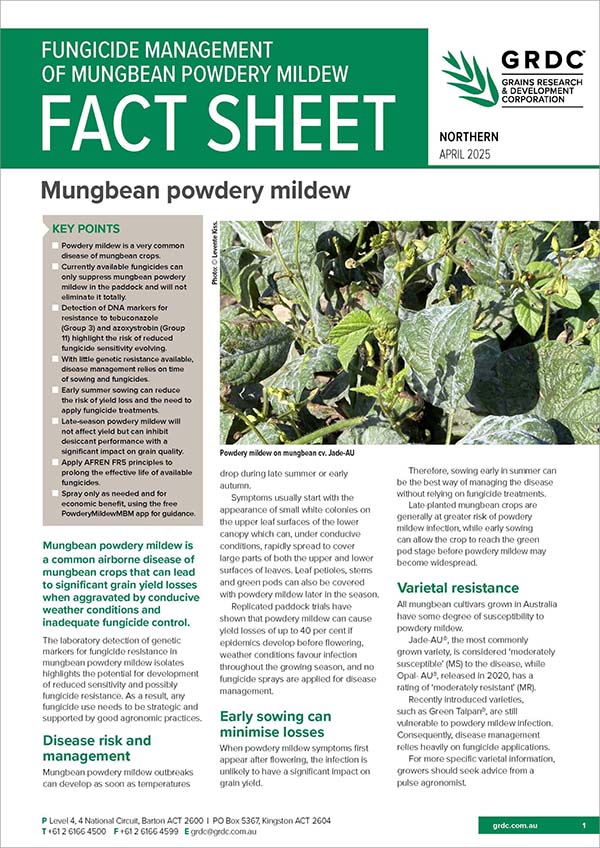Fungicide management of mungbean powdery mildew
Fungicide management of mungbean powdery mildew
Published: 03 Apr 2025
Mungbean powdery mildew is an airborne disease of mungbean crops that can lead to significant grain yield losses. This fact sheet explains the risk of resistance and offers management strategies.
Key points
- Powdery mildew is a very common disease of mungbean crops.
- Currently available fungicides can only suppress mungbean powdery mildew in the paddock and will not eliminate it totally.
- Detection of DNA markers for resistance to tebuconazole (Group 3) and azoxystrobin (Group 11) highlight the risk of reduced fungicide sensitivity evolving.
- With little genetic resistance available, disease management relies on time of sowing and fungicides.
- Early summer sowing can reduce the risk of yield loss and the need to apply fungicide treatments.
- Late-season powdery mildew will not affect yield but can inhibit desiccant performance with a significant impact on grain quality.
- Apply AFREN FR5 principles to prolong the effective life of available fungicides.
- Spray only as needed and for economic benefit, using the free PowderyMildewMBM app for guidance.
Want a printed copy?
Printed copies of some publications are available for growers, advisers and farming systems groups, for personal use and distribution at GRDC events.
Contact GroundCover Direct on 1800 11 00 44 or email ground-cover-direct@canprint.com.au to request copies. Publications are free but postage and handling costs may apply.
Download PDF
Region: North
GRDC Project Code: CUR2302-002RTX,

